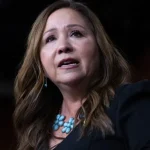
San Francisco activists and former drug users are questioning a proposal that would provide places for addicts to ingest illegal drugs as the city endures an unprecedented overdose crisis.
“Letting someone stay on the street and shoot dope until they die is not compassion. It’s not progressive,” Tom Wolf, a drug recovery advocate and former fentanyl user, told Fox News. “It’s not even really respecting their civil liberties.”
“It’s letting somebody kill themselves in front of you in slow motion,” he continued. “We should not normalize the fact that 600 people a year are dying in San Francisco from drug overdose.”
In an effort to curb overdose deaths, San Francisco Mayor London Breed has supported efforts to open supervised consumption sites, centers where users can use illegal drugs indoors under the supervision of trained staff. Additionally, a bill that would allow supervised consumption sites is making its way through the San Francisco Board of Supervisors, the city’s legislative body.
WATCH MORE FOX NEWS DIGITAL ORIGINALS HERE
“Regardless of how you feel about the sites, they’re probably coming to San Francisco,” Wolf said. “Is it going to make a difference in the aggregate without doing all the other things that we need to do, like breaking up the organized drug dealing ring that’s operating in San Francisco, reducing the supply of drugs, increasing treatment options for people?”
“No, it will not make a difference,” he continued.
There were over 2,900 accidental overdose deaths in San Francisco between January 2017 and December 2022, according to city data. More than 1,800 of those overdose deaths involved the synthetic opioid fentanyl — and outnumbers the city’s homicides, traffic fatalities and COVID-19 deaths combined over the same period.
In fact, overdose deaths outpace murders nearly tenfold, city data show.
California Gov. Gavin Newsom vetoed a bill last year that would have allowed cities like San Francisco and Oakland to open supervised consumption sites. He said they could lead to unintended consequences.
OVERDOSE PREVENTION CAMPAIGN CRITICIZED FOR ADVOCATING FURTHER DRUG USE: ‘DO IT WITH FRIENDS’
Each safe injection site in San Francisco could cost $2.6 million a year, according to the independent nonprofit Research Triangle Group.
“As we’re facing this unprecedented overdose crisis, San Francisco is just skipping over a bunch of steps straight to safe injection sites,” Wolf told Fox News. “They’re not doing enough around interdiction to reduce the supply of drugs on the street.”
“They’re not doing enough to break up the organized drug dealing ring that’s operating in plain sight in San Francisco,” Wolf continued. “So my point is, is they’re skipping over all those steps straight to safe consumption sites, which is something that should maybe happen in the continuum of care towards the end, once we have all of that infrastructure in place.”
Advocates say investment in recovery treatment should take priority over investment in harm reduction centers — sites intended to reduce overdoses through a variety of services including overdose prevention education and distribution of the overdose reversal drug naloxone and safe-use drug supplies such as syringes, tinfoil and pipes.
SAN FRANCISCO BAY AREA MOTHER OF FENTANYL USER WARNS CITY IS ENABLING SON’S DRUG USE
“We call it treatment, but harm reduction isn’t necessarily treatment,” Wolf said. “We actually need more residential treatment.”
Wolf said a six-month residential treatment program run by the Salvation Army started him on the road to recovery after he was homeless for months.
There are 58 detox beds for withdrawal management and 245 short-term residential treatment beds to aid addicts in the city, according to a San Francisco Department of Public Health portal. There are an estimated 22,500 people who inject drugs in the city, according to a study on supervised injection sites.
“We need to get the drugs off the street, make it harder for people to get high, make it easier for them to get treatment,” Wolf told Fox News. “And that means you have to invest in actual treatment.”
“Not just safe injection sites,” he said.
To watch the full interview with Wolf, click here.
Scroll down to leave a comment:







